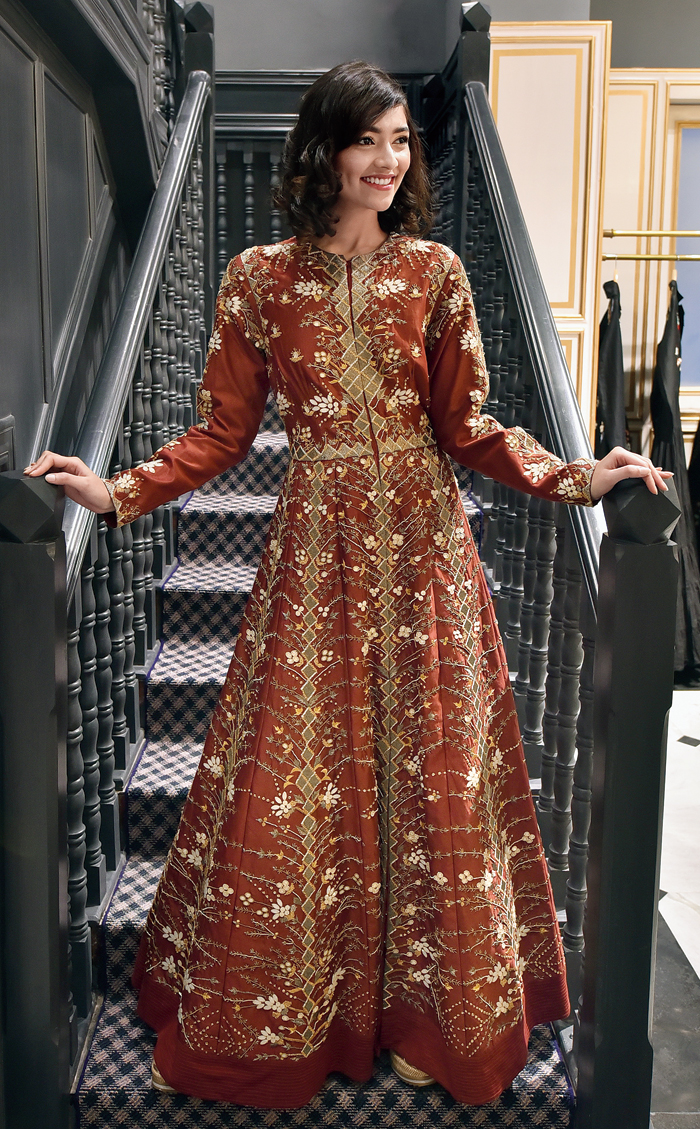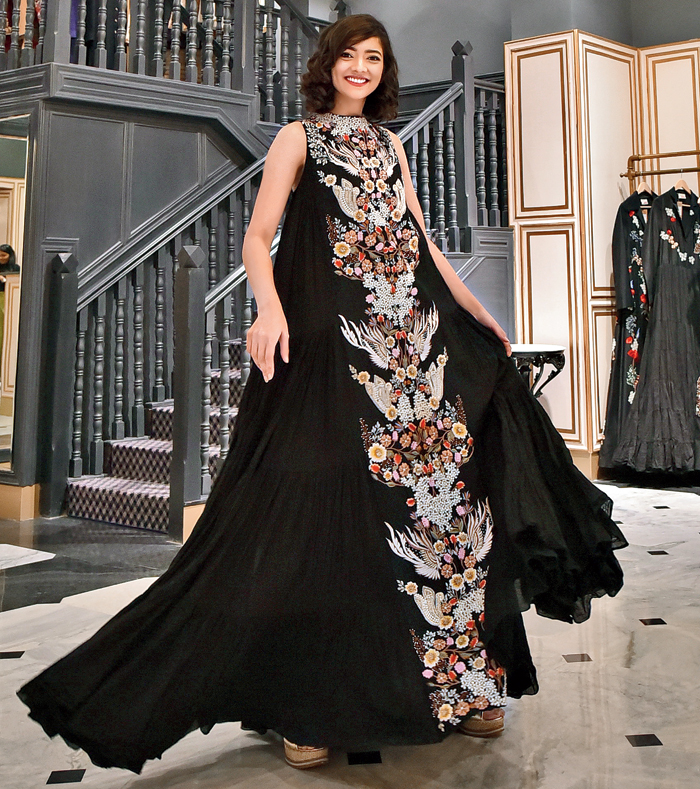Crafts are synonymous with our country and Samant Chauhan knows more than just a thing or two about it. Born and brought up in Bihar, Samant has always considered it his calling and responsibility to work with crafts of the state, thereby championing the cause of Bhagalpur silks from the onset. A non-conformist with his all-white palette that he did for 11 years, having recently forayed into colours, and nonchalant about trends, Samant has deftly managed to attract his own wearers. As he opened his new store in Calcutta, we caught up with him to discuss all things design. Excerpts:
This is your fifth store. So let’s start with why Calcutta...
I am born and brought up in Bihar but I have a lot of childhood memories in Calcutta. My dad was in the Indian Railways and Calcutta had the head office (for the eastern region) so I used to come here for Durga Puja shopping and to watch cricket matches. I am based out of Delhi and then Mumbai happened and it was planned that the third city had to be Calcutta.
And what about the city’s appreciation of design vis-a-vis how you have stocked your store?
The city has always been exposed to very high craftmanship so it’s very challenging for our team and this is the best place to test your craftmanship. We are really looking forward to make our old clients happy and to penetrate the market further. Calcutta-bred designers like Sabyasachi Mukherjee and Anamika Khanna are known for their craft and a lot of other designers who are based in Delhi or Mumbai have at least one unit in Calcutta because they wouldn’t get this level of karigars anywhere else.
At the Calcutta store, we have our latest collection called Starry Night that is our take on Van Gogh’s famous painting. A lot of pastel, light ensembles for spring weddings, a couture section with heavier lehngas and a menswear collection featuring things like sherwanis, shirts and kurtas that we are keeping upstairs.

Samant Chauhan’s store is located on the second floor of Galleria 1910 and is spread across 1,800sq ft. Divided into two levels by a mezzanine floor, the store keeps the character of the century-old building intact. B. Halder
How do you go about your design sensibilities without getting lost in external noise made by trends?
I am from Bhagalpur so I feel a responsibility towards that craft. It takes a lot of time to develop and then hone a craft so our generation should be responsible for preserving and taking it forward. I don’t look at trends at all and therefore I did only whites for many years. The idea was to make something that was classic and timeless and can be worn again and again and that’s our style of fashion.
So was it challenging to explain that when you were starting off?
Not really, because I wanted my creations to speak for me. Now we don’t even write in our press notes about how our things are handmade and handwoven and in which craft cluster. So when I brief my team, I tell them that a piece or a style has to sell because it’s good and has its own voice and identity — so that we don’t have to sell that story. First our fabric is treated at the yarn stage, then it is crushed, fused and then the stitching happens. It goes through a very complicated procedure so I just let my designs do the talking.
So what prompted you to shift to colours from white?
We did it for 11 years. My first black collection was about what it meant to me. I was born and brought up in a village where there was no electricity. So for me black meant darkness. In fact, when many of my customers would ask me why I only made white clothes, I would joke and say that it was perhaps because I could not see colour. Then one day, I was wondering what must my stitching operators think of me for making clothes in only one colour and that’s when I reversed it completely and made a black collection, about a year ago.

The maroon front-open anarkali has patchwork embroidery with a mix of dabka, nalki (glass beads) on a blend of cotton-silk for any occasion that warrants an Indo-western look. B. Halder
You have been showing at every season of the FDCI fashion week. What do you think about the relevance of fashion weeks in the Indian fashion industry?
Fashion week is the only thing we do because we don’t do ads or exhibitions. We just started our retail stores two years ago. So how do you tell your story to a wider audience? So fashion weeks always worked for us and they continue to do so. From 2007, we have only skipped one season. Yes, pressure is there but now, we are so used to it that we finish one show and start working on another collection.
From Kamasutra to different cities, your themes have always been very interesting. How do you choose your moodboard?
We are all storytellers and since we don’t look at trends, we just tell our story and use the garment as the canvas. I did Kamasutra because back in college, a teacher had asked me not to work with it so my first independent show was that. And since then, all our collections have been inspired by stories.
Evolution of fashion in India…
People are a lot aware now and you cannot cheat the customer as they know what they’re buying and what the process is. They know how a fabric has been made and which craft belongs to which state. The exposure of the clients have gone up. So that pushes us to keep updating ourselves as well. Even the established names and the generation preceding us know that they have to keep upgrading. And now, we, the next generation, also know that it’s time for younger generations to come in and sometimes, we are left amazed at what they do. E-commerce has also changed the business of fashion because it’s so fast and social media based.

An embroidered dream in black, this silk-cotton dress has a panel running down the front, and is balanced with flowy sides that can let you twirl around at a party with ease. B. Halder
Speaking of Bollywood, what do you think of celebrities dictating fashion?
It does help when celebrities wear my clothes. I think earlier it was more like whatever a celebrity wore would become fashion but now even they have become conscious of who they are wearing and to what occasion. And this is helping in educating clients and reach a wider audience and Bollywood is the biggest medium for that.
What is your version of couture?
I would love to design for a particular occasion — I don’t want a bride to walk in and choose a lehnga and buy it. I would like to make her occasion special and would want to dress her up in a special way, in a made-to-order way and that is couture for me.
And how difficult is the business of fashion in India?
I think it’s the most difficult business to be in. In India, what is happening is that we are making a collection, presenting it, doing marketing-PR and you have to create a completely new product line in the next six months. So the lifecycle is very short. And as for sustainability, I think in India, everybody does it. From mothers who would insist on siblings wearing the same T-shirt, before turning it into a pocha... so as Indians, we are born with the mentality of recycling. Every village, every state and every district has a craft that is special so I think we have the sustainability thing going right.










